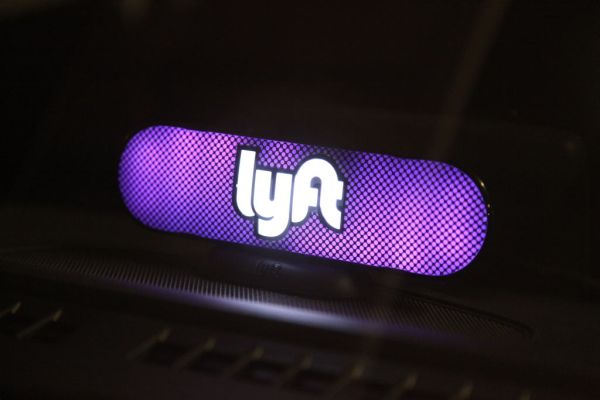Lyft has created a new business unit to beef up its digital advertising business across its tablets, mobile app, rooftops and bicycles, producing the potential to add billions of dollars to its bottom line.
The ride-hailing company announced on its blog Monday that Lyft Media will help cash in on the growing market for in-vehicle digital ads, as cars become more connected and begin to feature multiple, larger infotainment screens. The announcement comes days after Lyft and its biggest competitor, Uber, announced robust second-quarter financial results.
Both face increasing competition for location-based advertising. Uber, which entered the ad business in 2019 via its UberEats app before rolling out ads across its rooftops and ride-hailing app, said its advertising business could reach $1 billion in revenue by 2024.
Lyft’s blog post outlines a four-fold plan for raising ad revenue and competing against rivals.
“Our vision is to build the world’s largest transportation media network, delivering value to advertisers while also elevating the platform experience for riders and drivers,” the post read.
The rideshare company made its first digital ad play with the 2020 acquisition of Halo Cars, which makes the rooftop screens that run digital ads. Lyft already uses Halo screens to show location- and time-targeted ads on some of its rideshares in New York City, Los Angeles and Washington, DC, and plans to expand to other cities.
It also shows ads on the in-car tablets that allow riders to track their route, rate and tip drivers and control the music through Lyft’s partnership with iHeartRadio. Lyft said it plans to roll out the service to 25% of its rides in Los Angeles, Chicago, San Francisco and Washington, DC to reach millions of riders by the end of the year.
Lyft said that a portion of revenue from the display and tablet ads will go to its drivers, but it’s unclear how much of that money drivers will get.
The company also said that advertising opportunities on its mobile app can help brands reach almost 20 million active riders. Lyft Skins allow advertisers to overlay a customizable branded icon and banner on the screen. Lyft’s ads will also run on bikeshare ad panels and docks, as well as directly on its next-generation e-bikes.
As cars become more digitalized, the opportunities to generate revenue from targeting advertising content and subscription services multiply. A number of players are racing to provide the hardware, software and media that can rake in the advertising dollars.
Apple CarPlay and Android Auto are battling for more control over the user experience by burrowing into the guts of the vehicle. Apple announced at the 2022 Apple Worldwide Developers Conference that its next-generation CarPlay system will run the vehicle’s entire instrument cluster. Meanwhile, Google is upgrading its Android Auto system to allow split-screen displays to cram more information onto the monitor.
Plenty of other companies are angling for a slice, too. Audi spinoff Holoride said that it will roll out its virtual reality headsets in certain Audi models this summer.
